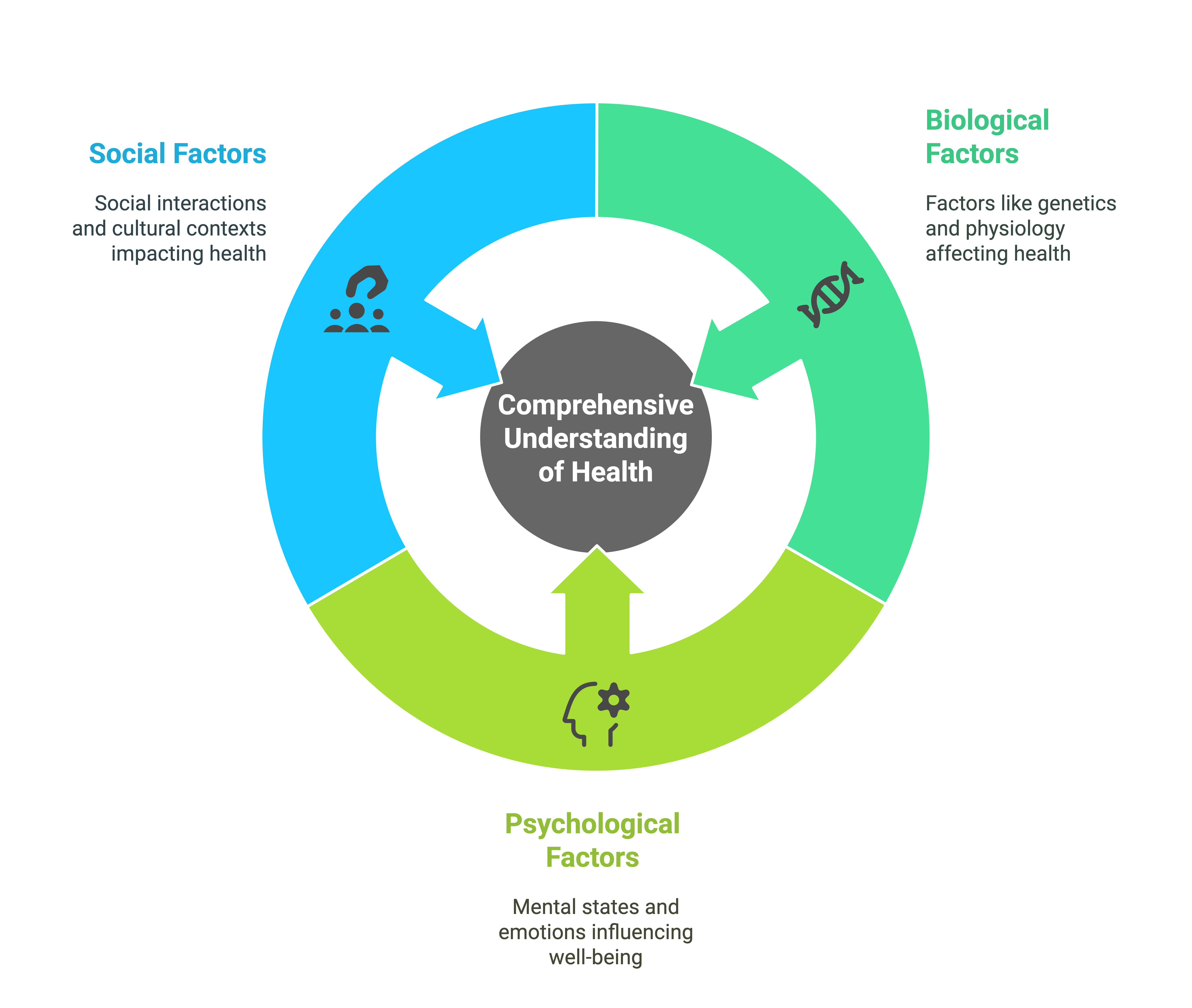The Biopsychosocial Model- A Fundamental Approach to Health and Wellbeing

Imagine trying to understand a highly intricate machine—a device with hundreds of gears, springs, and levers—by focusing on just one gear at a time. Sure, you might learn something about that single gear, but you’d miss how all the parts interact to make the machine work. Now, picture that this complex machine represents us—human beings.
Traditional health models often take a reductionist approach (i will refer to it as microscopic view), treating a problem as if it were an isolated malfunction in one tiny component. But what if we stepped back and asked, “What truly defines Holistic Health?” (i will refer to it as macroscopic view)
When you look at the bigger picture, you realize that health isn’t about a single part working perfectly—it’s about how all the parts interact dynamically. The biopsychosocial model teaches us that our wellbeing emerges from the constant dialogue between our biological, psychological, and social systems. It’s a blueprint that reveals how our body, mind, and relationships are intricately intertwined.
Starting from First Principles
At its core, the biopsychosocial model rests on one fundamental insight: Nothing exists in isolation. Every aspect of our well-being emerges from the interactions among various components. This idea isn’t new—it’s rooted in general system theory. When applied to health, it shifts our focus from merely fighting specific problems or even disease to nurturing the conditions that allow us to thrive.
The Three Pillars of the Model
-
Biological:
This is the physical “hardware” of our being: our genetic makeup, our body’s functions, sleep, nutrition, exercise, and more. It forms the foundation upon which everything else is built. -
Psychological:
Think of this as the “software”—the realm of thoughts, emotions, and mental resilience. It shapes how we perceive the world, manage stress, and respond to challenges. -
Social:
No machine operates in a vacuum. Our social environment—relationships, community, and cultural context—forms the network that supports, challenges, and molds us.
The Power of Interconnectedness
At first glance, these three domains might seem separate. However, the true strength of the biopsychosocial model lies in their interactions. For example:
- Biological ↔ Psychological: Poor sleep can impair your mood and cognitive function.
- Psychological ↔ Social: Chronic stress can strain relationships and erode social support.
- Social ↔ Biological: A supportive community can bolster recovery from illness.
Each interaction is part of an intricate network where a change in one area can trigger ripple effects throughout the entire system. Rather than offering just three isolated options, this model provides an almost exponential number of leverage points for meaningful change.
Why This Matters
This model isn’t just an academic exercise—it offers a profound practical insight:
to optimize our health and performance, we must address the whole system.
Instead of chasing quick fixes for isolated symptoms, we can design interventions that target the root causes embedded in the dynamic interplay between body, mind, and society. This comprehensive perspective, built on both a microscopic and macroscopic view, is key to achieving lasting, transformative improvements.
My Real-World Use Case
I use this model as my guiding Framework vs Mindset when addressing stress and performance. Here’s how I break it down:
-
Biological Stress and Performance Model:
Understanding and optimizing our physical responses—sleep, nutrition, exercise—to enhance performance. -
The Psychological Stress Model – A First Principles Guide to Mastering Your Stress:
Harnessing the power of mindset, emotional resilience, and cognitive strategies to manage stress effectively. -
Social Stress and Performance Model:
Leveraging social support, community engagement, and interpersonal dynamics to bolster overall wellbeing.